When we're officially in Spring and Summer Roll season, it's the perfect time to blend up big batches of umami-rich natural Homemade Hoisin Sauce to make the best dipping sauce. Shall we?

Jump to:
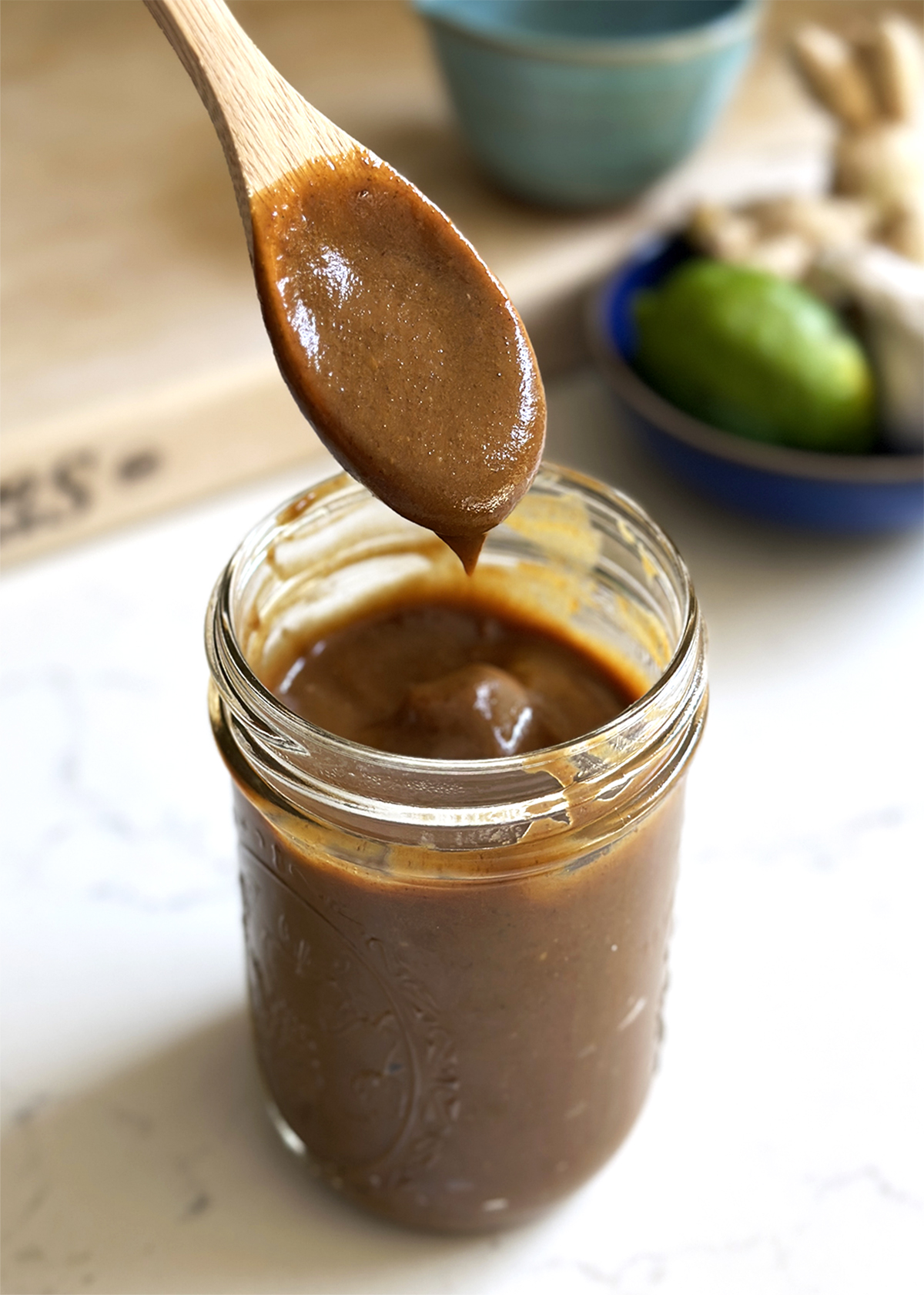
What Exactly is Hoisin Sauce?
Hoisin sauce is a rich, velvety fermented soy-based sauce commonly used in Chinese cuisine, both by itself as a finishing sauce or condiment, and as an ingredient in other dishes.
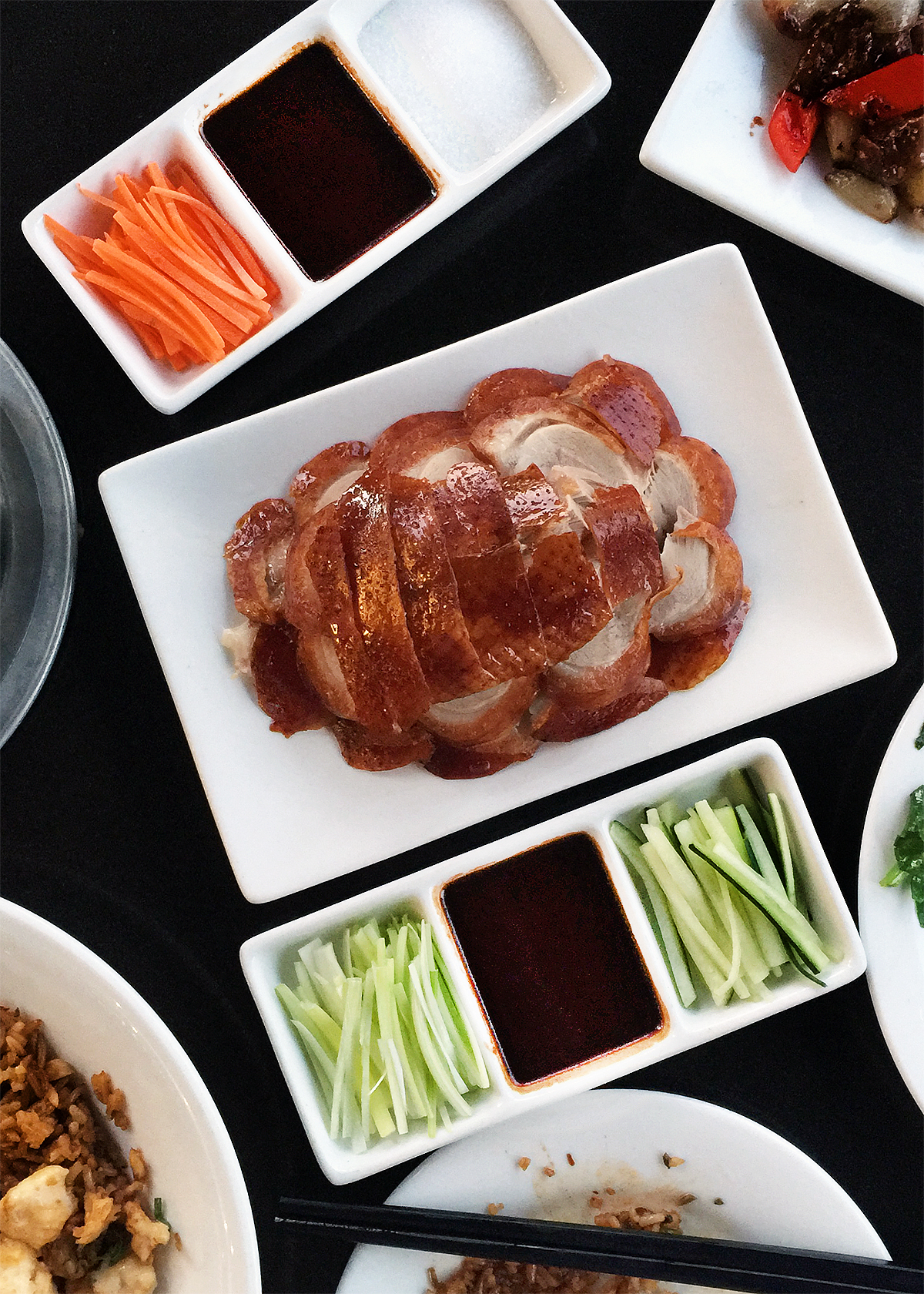
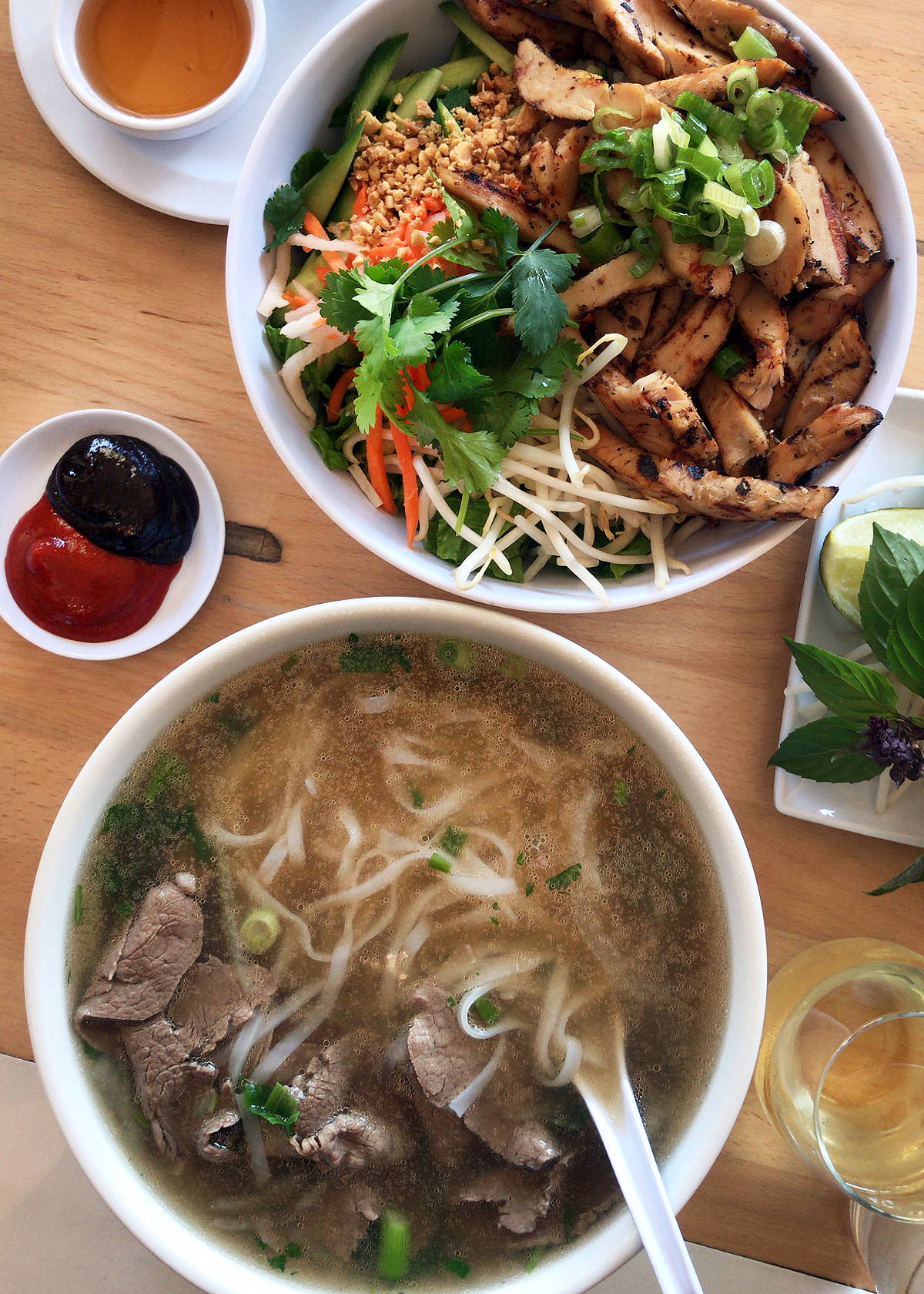
If you've ever gone to Chinese restaurant and had roast Peking duck then you've had hoisin sauce. It's the delicious, dark glossy sauce that gets painted onto the accompanying gossamer-thin crepes before rolling! Hoisin sauce also accompanies mooshu chicken wrapped in similar crepes. Oh and that little dish of sauce or whole bottle that comes with your steaming hot bowl of Vietnamese pho? That's hoisin sauce.
Cooks use hoisin sauce as an ingredient to marinate or glaze meats before grilling or roasting kind of like barbecue sauce, and as an ingredient in sauces, marinades, and stir-fries.


What is Traditional Hoisin Sauce Made of?
Though the makeup of hoisin sauce varies across bottled brands, cooks, and even entire regions, the main ingredient in hoisin sauce is fermented soybeans, which is what gives the sauce its dark color and rich, umami flavor.
In addition to fermented soybeans, hoisin sauce includes varying proportions of sugar, garlic, vinegar, sesame, five-spice powder, and sometimes chilis for heat. A few hoisin sauces also have plum juice or puree. Remember that last part for later!
Most commercially sold hoisin sauces contain starchy thickeners like sweet potato, wheat or rice, and preservatives or food coloring to deepen the color.
Traditional hoisin sauce is plant-based, and some versions without soy sauce and wheat thickeners can be gluten-free.
What Does Hoisin Sauce Taste Like?
Hoisin sauce tastes deeply savory like soy sauce, and quite sweet. It is slightly tangy, with a distinctive but indescribable spice note that distinguishes it from other sauces. Because of its thick, velvety texture and its use as a glaze for grilled meats, hoisin sauce is sometimes called Chinese BBQ Sauce, and it does indeed taste like a very savory barbecue sauce that has soy sauce in it.
If you're new-ish to hoisin sauce, you might confuse it with other Chinese sauces that look similar or are used in the same way. Here are some other sauces distinct from hoisin sauce.
Does Hoisin Sauce Taste Like Oyster Sauce?
Hoisin sauce and oyster sauce have very different flavors and are not really interchangeable, even though they look alike, and in many cases, are sold in the same shaped bottle. Both hoisin sauce and oyster sauce are dark brown, thick, Chinese sauces with deeply salty, savory, and umami-rich flavor. While hoisin sauce gets its umami from fermented soybeans and has quite a bit of sweetness, oyster sauce gets its umami from, you guessed it, literal oysters and is not nearly as sweet.
Is Hoisin Sauce the Same as Duck Sauce or Plum Sauce?
Duck Sauce. Hoisin sauce is one of the original "duck sauces," since the dark, glossy sauce is almost always served with traditional Peking duck. However, there is also a Duck Sauce that is associated with Chinese American restaurants. This Chinese takeout duck sauce is more like a sweet, sour, and sometimes spicy apricot or peach jelly that is used for dipping fried foods. There is no duck in this duck sauce, and there's no hoisin sauce in there either. It's called duck sauce because at some point in history, a similar type of sauce was served with duck.
Plum Sauce. Hoisin sauce and plum sauce are totally different, though both are associated with duck. Plum sauce is more similar to duck sauce in that they are both sweet and sour glossy gel type sauces, as opposed to the dark, opaque brown of hoisin sauce. Plum sauce can be used out of the container as a condiment, or as an ingredient in other dishes. Though it's called "plum," the sauce is not a deep purple plum color but a light apricot peach color, made from pickled Chinese plums which look more like apricots.
Confused yet? That's ok. Just remember that this Homemade Hoisin Sauce is an all-purpose sweet and savory soy-based sauce.

What's the Difference Between Hoisin Sauce and Hoisin Dipping Sauce?
Because hoisin sauce is delicious and complex enough on its own, it can itself be poured straight out of the bottle to use as a condiment or dip, as with Peking duck, mooshu dishes, and pho. In this case, hoisin sauce IS the sauce.
Hoisin dipping sauce or Hoisin dip combines hoisin sauce as an ingredient with additional ingredients. Depending on what's being dipped, hoisin dipping sauce can include more garlic, peanut butter, lime juice, hot sauce and more.
The Secret to Homemade Hoisin Sauce
With so many bottled hoisin sauces availble to buy, even in conventional grocery stores these days, why bother making your own? SO glad you asked!
Many commercial brands of hoisin sauce employ refined sugars, unnecessary starch thickeners, and even food coloring for shelf appeal.
Making Homemade Hoisin Sauce means you can fit it into certain healthy lifestyles or dietary needs, but mostly, at least for me, it suits personal, umami-rich, "not too sticky sweet" taste preferences, which brings us to...
The secret to this Homemade Hoisin Sauce is prunes! Yes, prunes, to replace both the refined sugar and unnecessary starch thickeners in most regular store-bought hoisin sauces.
As mentioned above, some hoisin sauces have incorporated plums in some format for flavor and color, so we're not too far off as prunes are simply dried plums. Prunes add natural sweetness and a subtle fruity tang, and create that glossy, velvety texture we like about hoisin sauce.
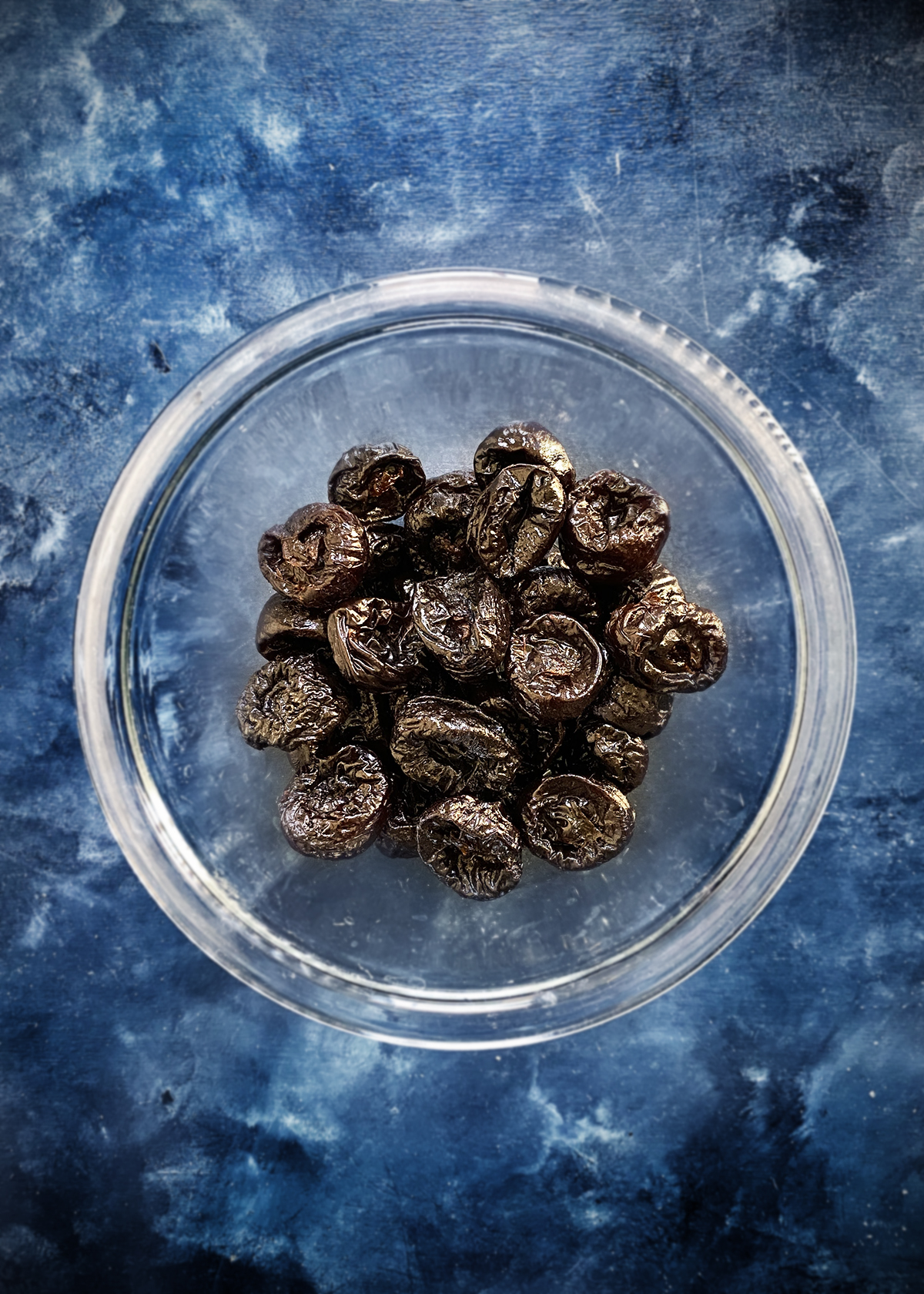
Is Hoisin Sauce Healthy?
As mentioned, commercial, store-bought bottles of hoisin sauce can have quite a bit of refined sugar as well as unnecessary starchy thickeners, which might not be as healthy as you'd like. This Homemade Hoisin Sauce is health-ier because it replaces refined sugar and starch with prunes, amps the gut health with fiber and fermentation, and most importantly, because is tastes so good, it cane make all those brassicas and leafy greens taste even better!
Health Benefits of Prunes*
We "gut health girlies" all know about the gut health benefits of prunes that come from their soluble and insoluble fiber content. But prunes have additional health benefits. One 38-gram serving of prunes, which is 4-5 prunes:
- provides 3 grams of both soluble and insoluble fiber
- has only 90 calories per serving
- is a good source of vitamin K, providing 20% RDA
- provides more antioxidants per serving than a serving of dried cranberries!
- Low-glycemic index at 29
* nutritional information provided by California Prunes
Health Benefits of Miso
In addition to the health benefits provided by the prunes, this Homemade Hoisin Sauce recipe contains miso which, as a fermented food, provides gut-health promoting probiotic bacteria.
Prunes provide both soluble and insoluble fiber! Miso provides probiotics! Look, I'm not saying that Homemade Hoisin Sauce is a "health food." But clearly I'm not not saying that either.
Dietary Considerations of Homemade Hoisin Sauce
This recipe for Homemade Hoisin Sauce as published, is:
- 100% plant-based/vegan
- vegetarian
- dairy-free
- gluten-free
- refined sugar-free
- lower on the glycemix Index than most bottled hoisin sauces made with regular refined sugar

What Ingredients You Need for Homemade Hoisin Dipping Sauce
Everything you need for Homemade Hoisin Sauce very conveniently comes from the pantry:
- Prunes
- Miso
- Tamari or soy sauce
- Rice vinegar
- Garlic
- Chinese five spice powder
- Sesame oil
- Sea salt
You will also need water to thin out sauce for that saucy, pourable texture.
Ingredients for the Hoisin Peanut Dipping Sauce:
- Homemade Hoisin Sauce above
- Peanut butter or other nut butter
- Garlic
- Lime juice
- Chopped nuts for garnish

What Kind of Prunes are Best for Cooking? And Where Do You Buy Prunes?
Use California prunes for this and any other recipes! California grows 99% of the prunes in the US and 40% of the prunes around the world. So, more than likely if you're eating prunes in the United States, they're almost certainly from California.
You can find prunes in every grocery store near the produce department since prunes are, in fact, a dried type of plum! And because prunes by themselves can be a healthy, subtly sweet snack, you can also find them in the snack aisle.
Does it Matter if Prunes are Non-Sorbate?
In the photo above, the prunes in the bowl on the left are "non-sorbate" and feel dry to the touch. The prunes on the right have sorbate and are shiny, plumper, and feel sticky to the touch. Either one work for this recipe!
Here's the info from California Prunes: "Prunes are sometimes coated with potassium sorbate to preserve them and help retain moisture content. Potassium sorbate or sorbic acid is considered safe for consumption. Prunes without potassium sorbate are less sticky and more chewy."
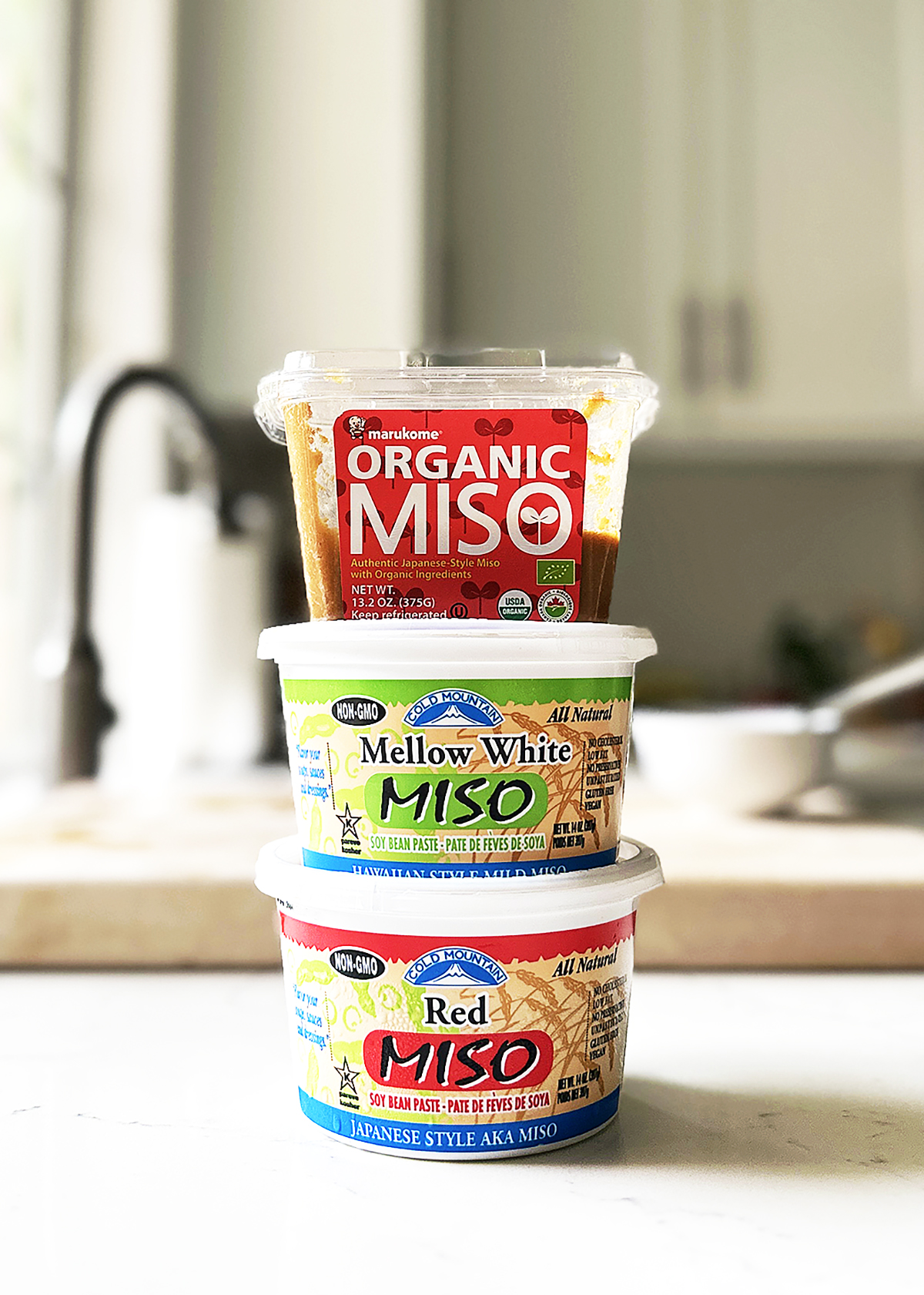
What Kind of Fermented Soybeans for Hoisin?
This recipe for Homemade Hoisin Sauce uses miso, which is a Japanese style fermented soybean paste.
There are several different types of miso which range in flavor, color, saltiness, and most importantly (to me) intensity of funk. No surprise here, but the funkier, the better. Miso can be labeled and categorized in a number of different ways, e.g. by ingredients, fermenting agent, city of origin, "style," but the easiest way for most people is to simply refer to the color. Darker miso—labeled "red" or "aka miso"—is stronger in flavor and is usually saltier. I love darker red miso for soups and making dips for vegetables. Red miso definitely works for this recipe. This brand, and this brand are the two organic brands I buy most often.
Traditional Hoisin Sauce is made with Chinese fermented soybeans or soybean paste. If you have access to that, by all means use it!
You can also use Korean fermented soybean paste, doenjang.
Additional Ingredients Notes and Resources
Tamari. Tamari is a Japanese soy-based sauce, and generally fermented without wheat, so it is gluten-free. If you can tolerate gluten, you can use regular soy sauce. This is the organic brand of tamari I use, available at Whole Foods and online.
Rice Vinegar. Use rice vinegar, and not rice wine which is an alcohol you might know as sake, or mirin, which is a seasoned rice vinegar with salt and sweeteners. I use this organic rice vinegar. If you can't find rice vinegar, apple cider vinegar is a good substitute.
Chinese Five Spice. Chinese five spice is an actual blend of, you guessed it, five different spices, sometimes a few more. While the exact blend and proportions vary across homemade recipes and store-bought brands, in general, Chinese five spice comprises: 1) star anise 2) fennel 3) cinnamon 4) cloves, and 5) where much of the variation comes in but usally in the "spicy heat" family like ground ginger, pepper, or Sichuan peppercorns. I personally blend my own Chinese Five Spice with ginger as the fifth spice, but when I buy a prepared blend, this is one I look for, which has white pepper instead of ginger. As a side note: because Chinese Five Spice has cinnamon and cloves, it is an interesting twist to your usual Holiday baked goods.
Toasted Sesame Oil. Toasted sesame oil is added for the toasty, umami flavor. This is the brand of sesame oil I use.
Instructions for How to Make Homemade Hoisin Peanut Dipping Sauce
Make Homemade Hoisin Sauce First
Highly recommend making multiples of the recipe so you have Homemade Hoisin Sauce as a staple ingredient in your refrigerator for all the Summer Rolls you're going to make or whatever else you'll be cooking up all season!
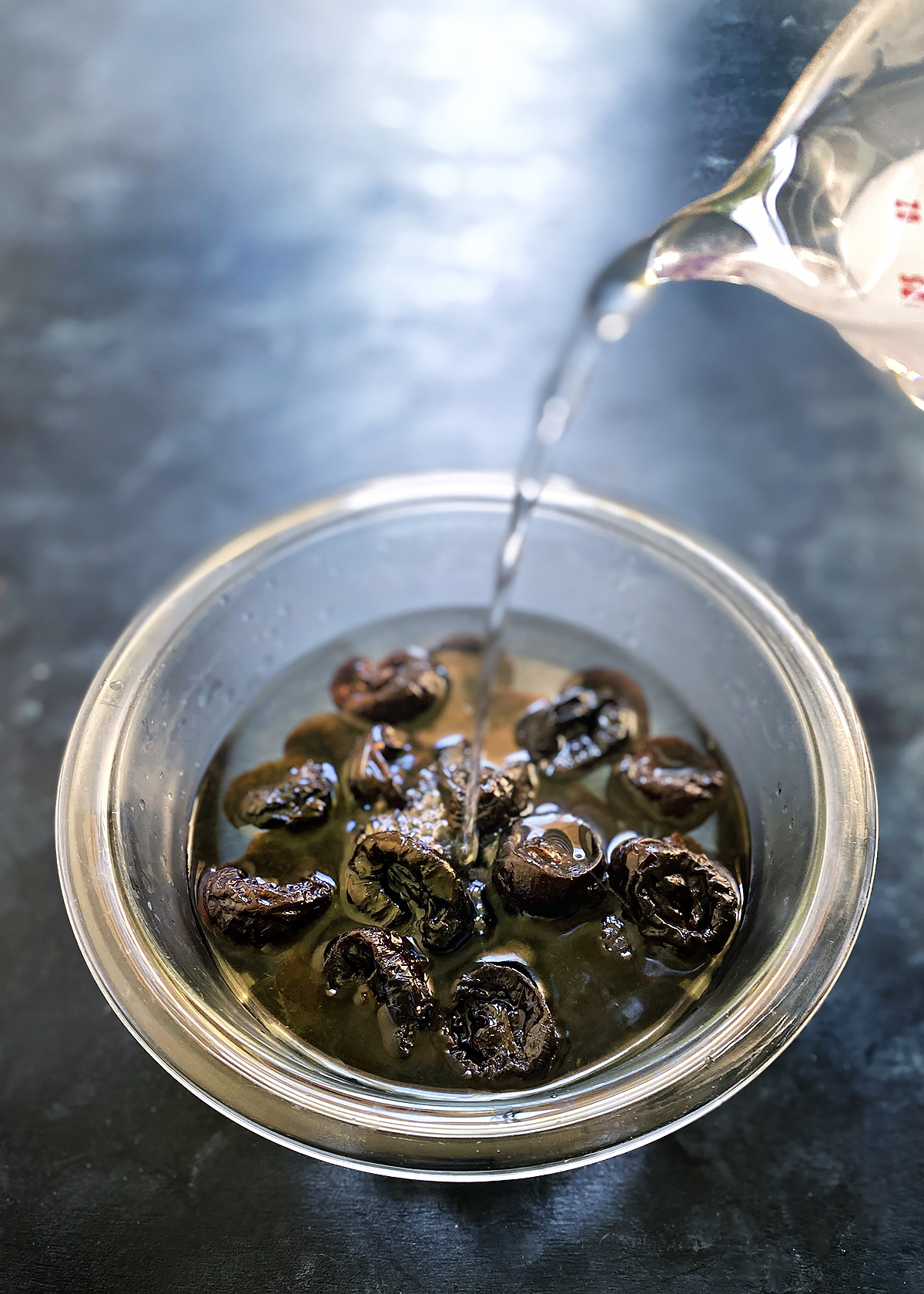
Pour boiling hot water over prunes and allow prunes to soak and plump, at least 1 hour, up to overnight.

You can let the prunes soak on the countertop loosely covered with a plate or kitchen towel to keep out any curious pets or otherwise.
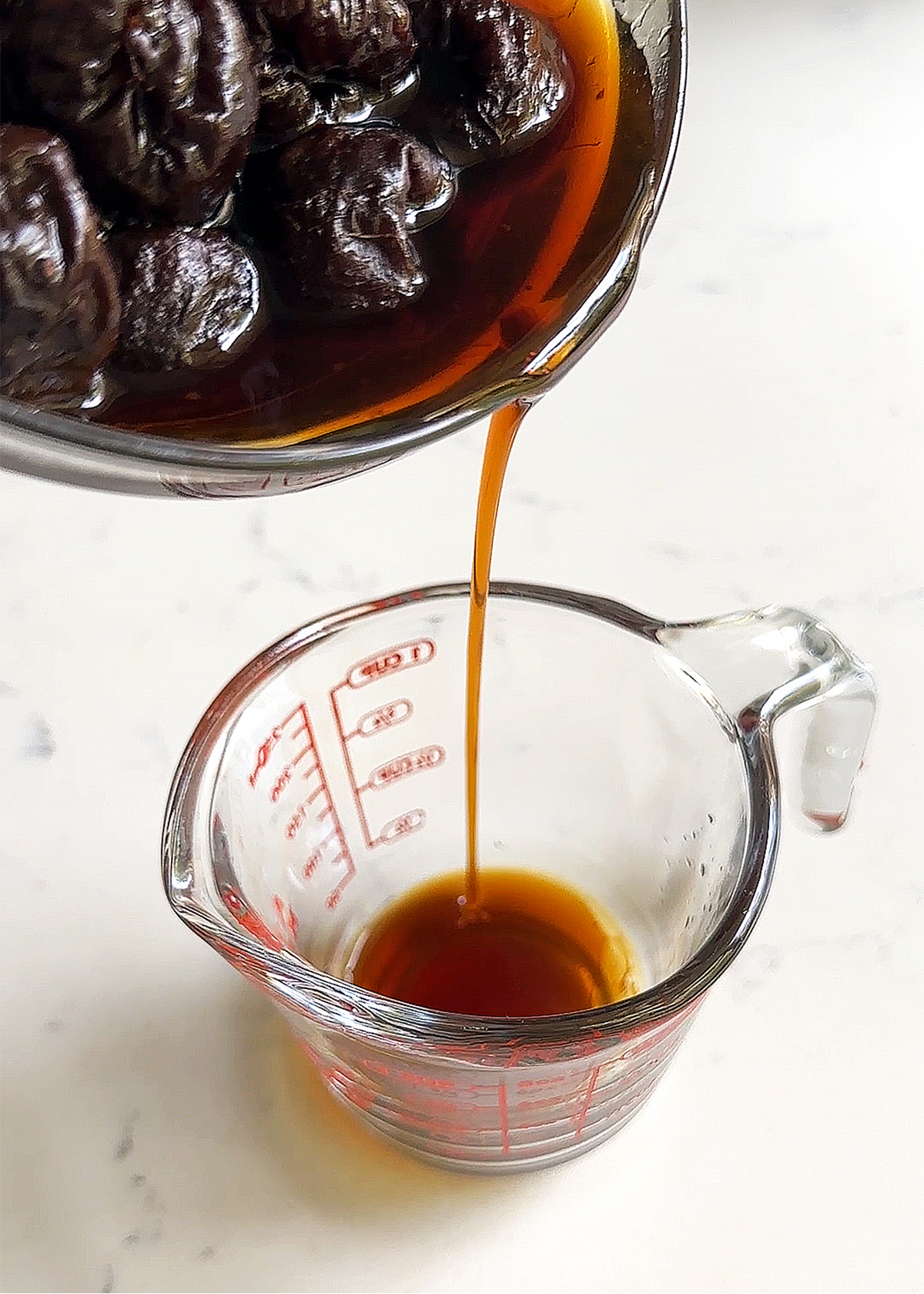
Drain the plumped prunes, reserving the soaking water to use later to thin out the sauce.
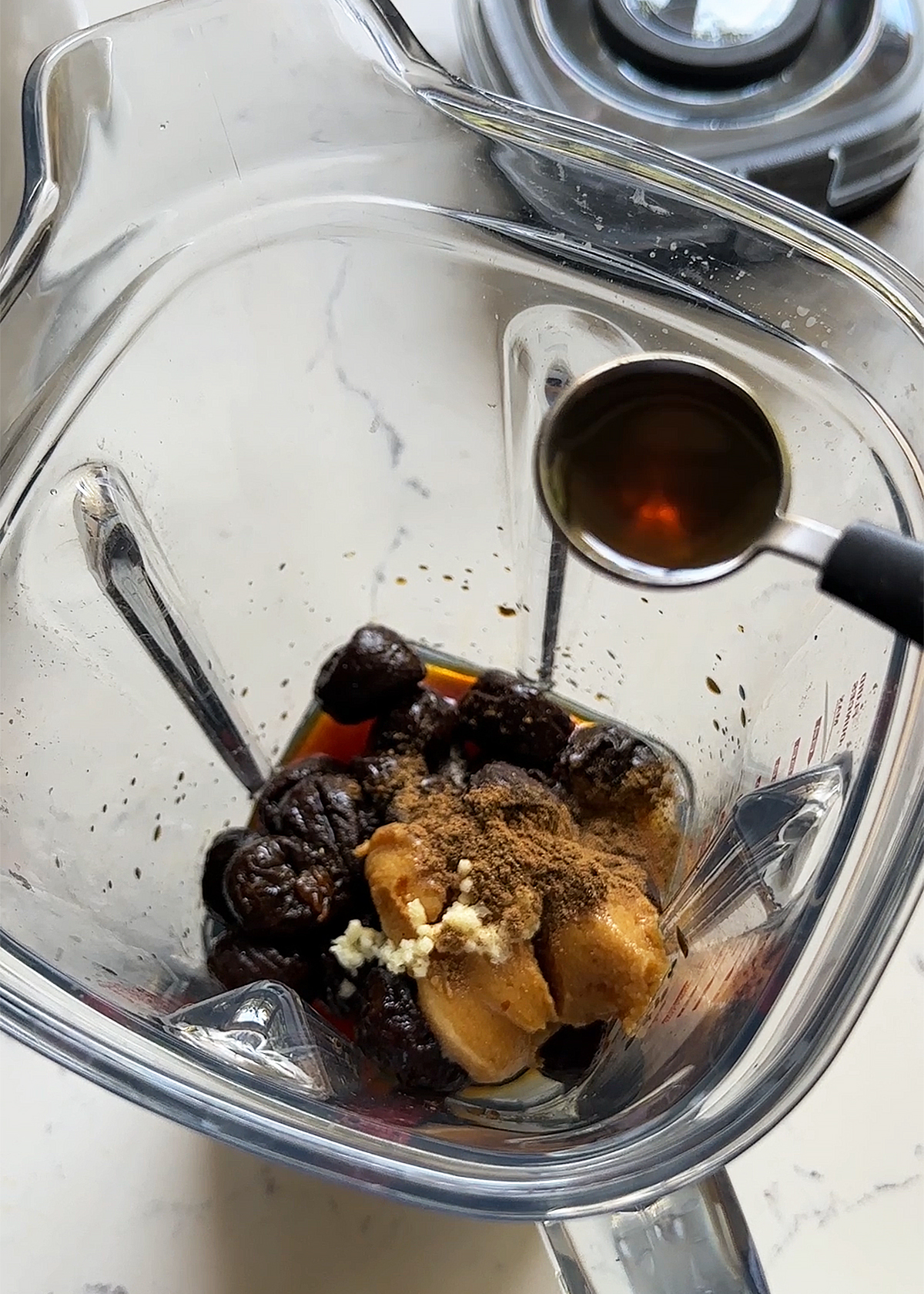
Place the plumped prunes into a blender or food processor and add the remaining ingredients: miso, tamari or soy sauce, rice vinegar, minced garlic, Chinese five spice powder, and sesame oil.
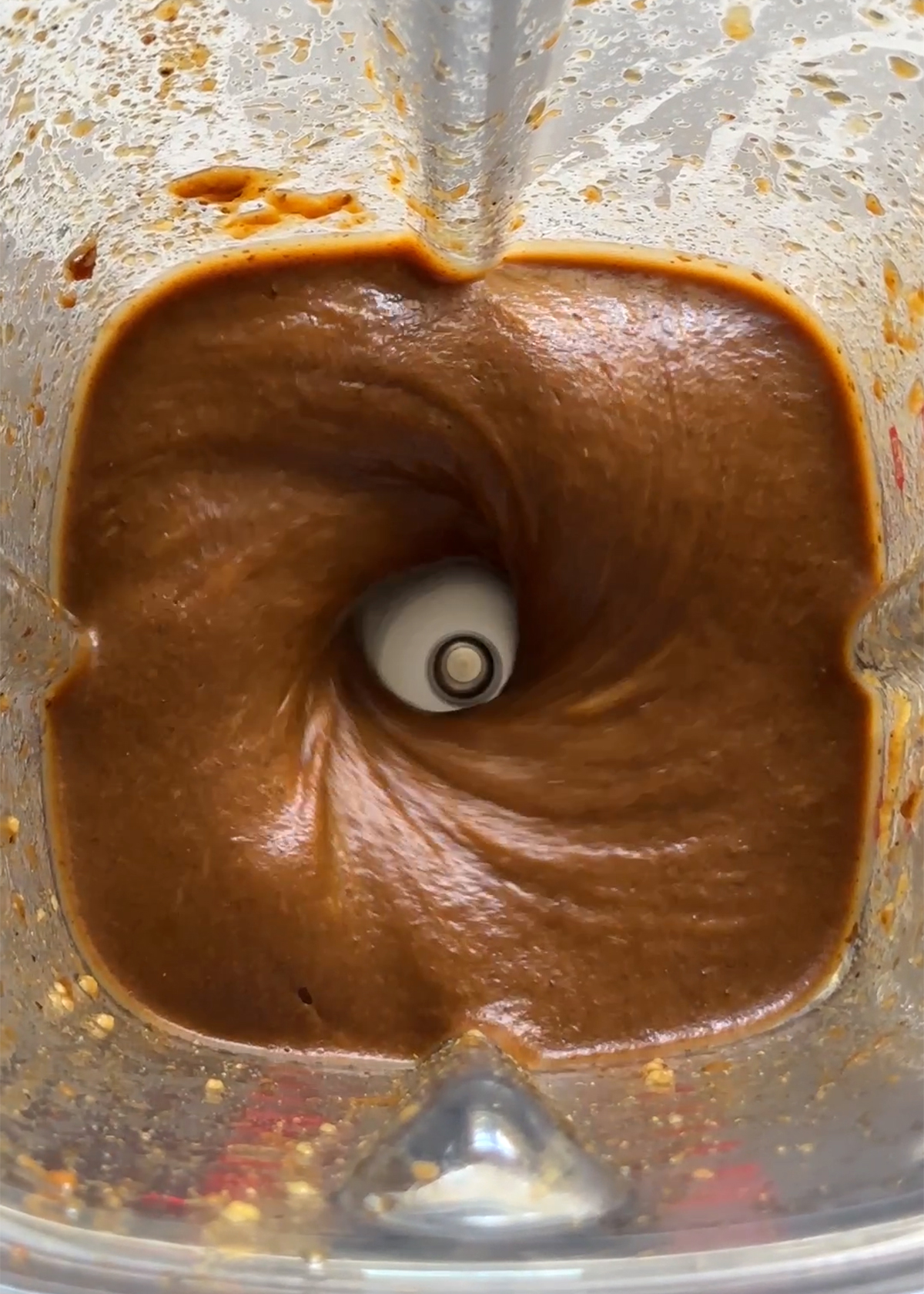
Pulse the ingredients to combine. Add water to thin sauce.
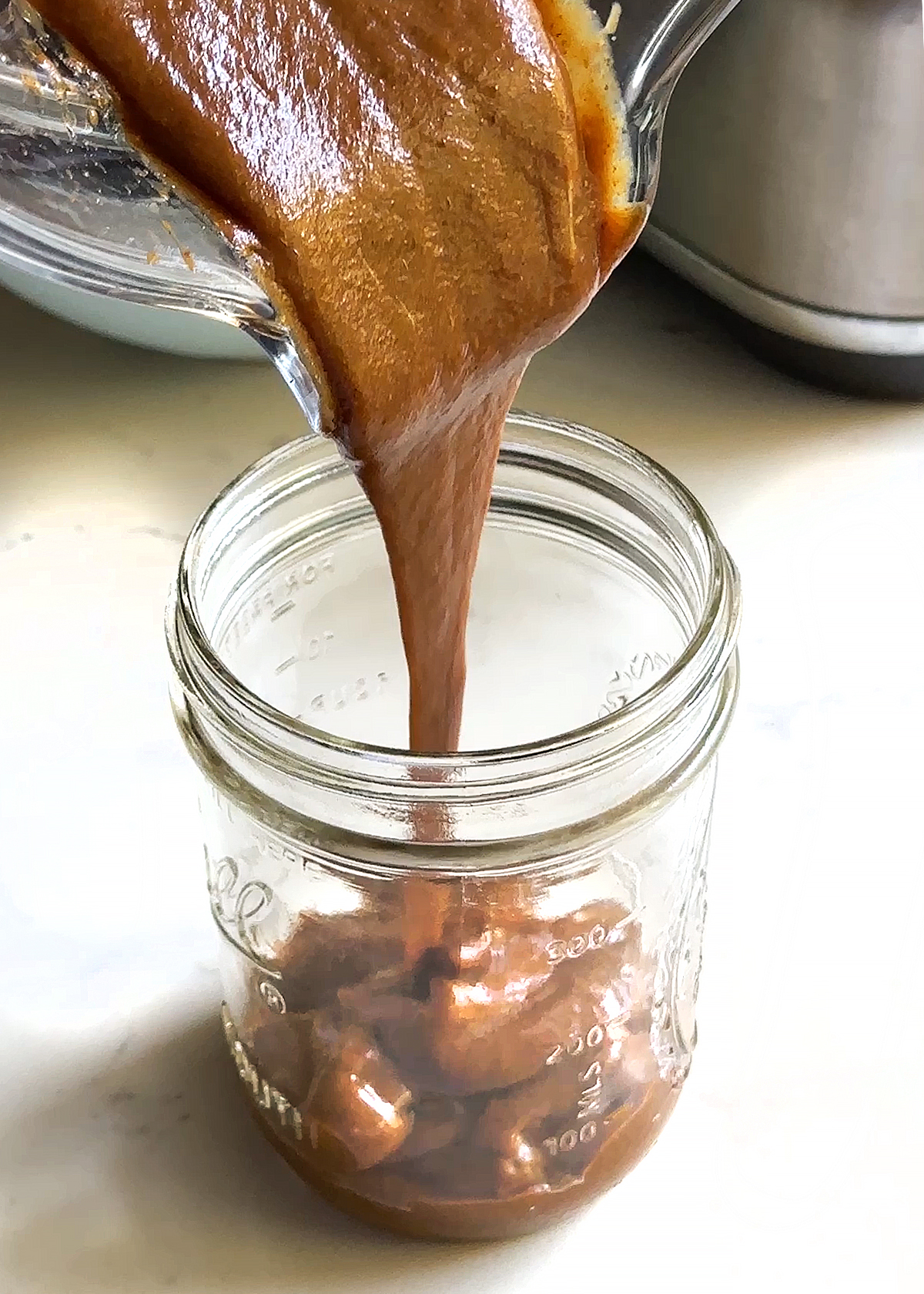
Reserve about 1 cup of Homemade Hoisin Sauce to make the Hoisin Peanut Dipping Sauce, and transfer the rest to a glass container with a tight-fitting lid to store in refrigerator for later!
Make the Hoisin Peanut Dipping Sauce
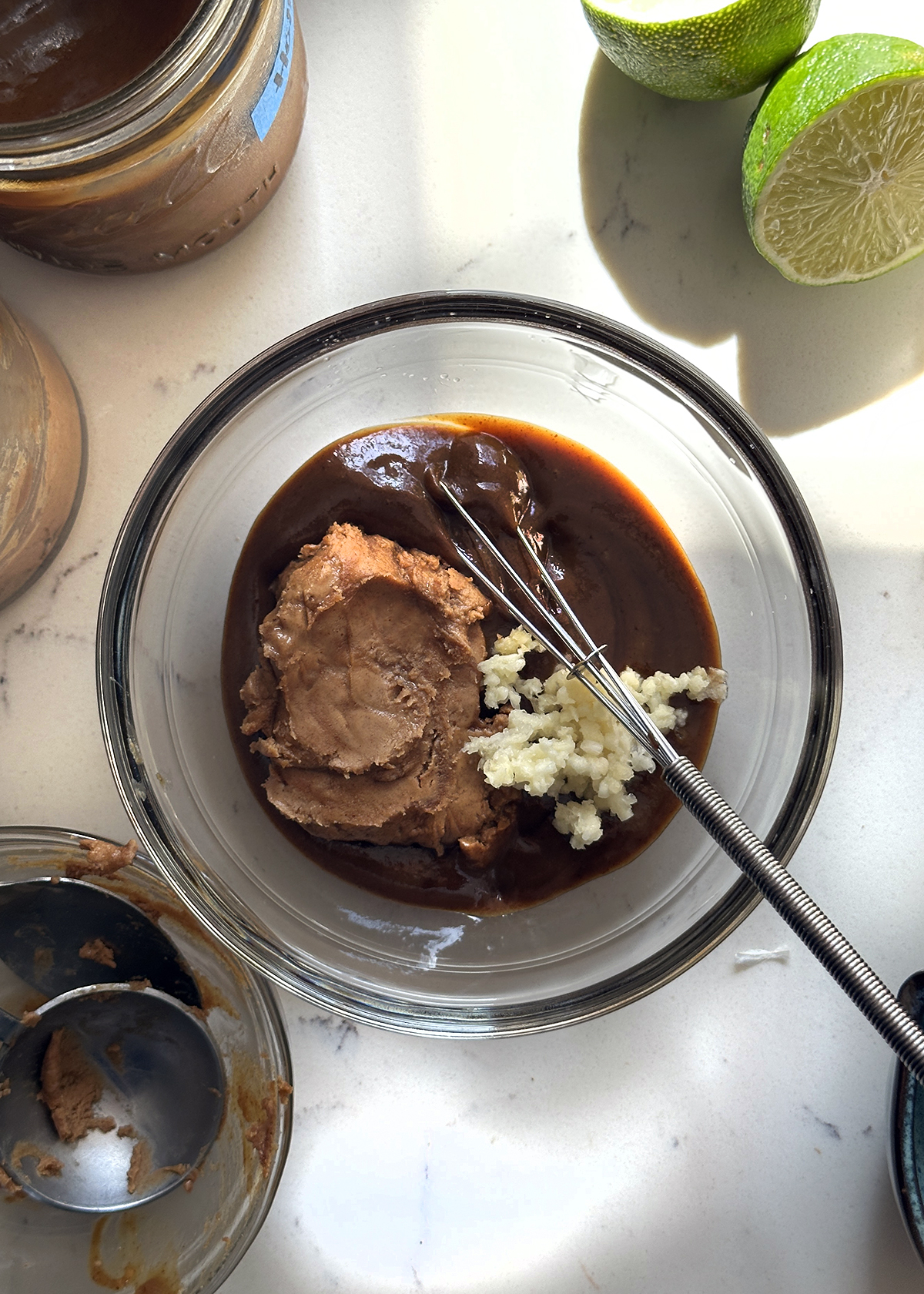
In a bowl, whisk together Homemade Hoisin Sauce, peanut butter, garlic, and lime juice. Add water to thin out sauce into a dippable consistency.

Transfer Hoisin Peanut Dipping Sauce to serving bowl and garnish with coarsely chopped roasted salted peanuts, or whichever nut butter you used in the sauce (almonds, cashews...)
Pro Tip: Double (or even triple?) the batch of Homemade Hoisin Sauce. This recipe makes about 2 cups of Homemade Hoisin Sauce, ½ to 1 cup of which you will immediately use for the Hoising Peanut Dipping Sauce, leaving with you not very much of the original staple ingredient! Make double the hoisin and save it. There will be multitudes of ways to use it, not the least of which is more dipping sauce for more Spring Rolls.
Can I Make Ingredient Substitutions?
Other Fermented Soybeans for Miso. The main ingredient in traditional hoisin sauce, other than sugar, is Chinese fermented soybeans which come in a wide range of forms and across cuisines. I use miso, the Japanese fermented soybean paste, which is more commonly available where I live, even in regular (non-Asian) grocery stores. So technically, this recipe is already using the ingredient substitution! Miso also comes in a broad spectrum of flavors and colors. A deeper, darker colored "red" miso will produce a final Homemade Hoisin Sauce that has an equally deeper, more umami-rich flavor. Doenjang, the Korean fermented soybean paste, is also an equally rich substitution.
ACV or Lime Juice for Rice Vinegar. Is you don't have rice vinegar, apple cider vinegar in the same amount is a great substitute. If you want to use citrus juice, use double the amount of lemon or lime juice.
Chinese five spice powder. There is no single ingredient substitute for Chinese Five Spice. However, you may have at least some if not all of the individual spice components: star anise, cinnamon, fennel, cloves, and either pepper or ground ginger. Blend together 1 part each of ground star anise, cinnamon, fennel, and pepper or ginger, and just barely a pinch of cloves (which are very intense!), and you'll come pretty close!
Sesame oil. If you don't have access to toasted sesame oil, you can substitute with an equivalent amount of tahini paste, or double peanut butter. If you use the latter, you will need more water to thin out the final consistency.
Tools and Equipment
- High power blender to blend the ingredients into a smooth, dippable consistency. If you don't already have one, this is the brand I have and use.
- Food processor. My time with my food processor that I've had for 15+ years is coming to an end because it's just getting old, and they don't make replacement parts for this exact model anymore, so it's time to move on... to the EXACT SAME equivalent food processor because I love it.
- Mini ¼-cup liquid measuring cup
- Measuring spoons
- Glass mixing bowls for making marinade
- Mini whisk
- Glass storage container with airtight lids, perfect size for storing Homemade Hoisin Sauce, and even transferring your sauce out of the plastic container from the store into glass!
- Wide-mouth mason jars and air-tight screw-on lids

How Long Can You Keep Hoisin Sauce?
Refrigerator. Save both leftover Homemade Hoisin Sauce and leftover Dipping Sauce in a tightly sealed container, preferably glass, in the refrigerator for up to 2 weeks.
Freezer. Store leftover or extra Homemade Hoisin Sauce and Dipping Sauce for the longer term in the freezer. Divide sauce into smaller "ingredient-sized" portions and freeze separately so you can defrost and use only the amount you need at the time. The best ways I've found to do this is to freeze in ice cube molds, pop out, and save cubes in a large freezer storage bag, or place all of the leftover sauce in a large freezer bag, squeeze out all the air, and freeze into a thin flat "sheet" that you can break apart easily.

How to Add Prunes to Recipes
More fiber? Less refined sugar? Just because they taste good? For whatever reason, to incorporate more prunes to your diet beyond just popping them straight up, add prunes to the recipes you already love, especially desserts!
Adding prunes to recipes is an easy way to increase the health factor. Prunes are naturally sweet so they are a great substitute for refined sugar. When re-hydrated and pureed, prunes can be used as both a replacement for butter or oil and as a binding replacement for eggs in baked goods. If you're looking for ways to replace refined sugar with lower-glycemic sweeteners, or reduce fat from butter, oil, or eggs, or even just move toward a more plant-based diet, prunes are an excellent way to do that.
In this recipe for Homemade Hoisin Sauce, prunes provide the subtle sweetness and the thick rich texture that would otherwise come from starchy thickening agents.
The Best Healthy Prune Recipes
If you're perfectly happy popping 4-5 prunes straight up every day (like me!), that's awesome! But if you'd like to incorporate prunes into your lifestyle in other ways, here are a few more recipes to try:
- Pinot Prune Jam the new jam for cheese and charcuterie board
- Healthy Chocolate Spread aka "no-tella"
- Chocolate Salami, a subtly sweet dessert or snack
- Brownie Baked Oatmeal, no eggs no banana
Best Dipping Sauces for Spring Rolls and Beyond
There is nothing I like better than meal that's built around dips, so here are a few to consider:
- Fish Sauce Vinaigrette aka Nuoc Cham, a quintessential spring roll dip
- Peanut Sauce
- Miso Ginger, salad dressing or dip!
- Bibimbap Sauce, mix into bibimbap or use as a spicy dip!
What to Do with Extra Hoisin Sauce
- alongside a bowl of pho
- stir-fry tofu and any vegetables
- drizzle sauce for lettuce cups
Homemade Hoisin Peanut Dipping Sauce
Ingredients
Homemade Hoisin Sauce
- 1 cup prunes about 20 prunes
- ¼ cup miso
- 3 tablespoons tamari or soy sauce
- 2 tablespoons rice vinegar
- 1 large clove garlic smashed into a paste
- 1 teaspoon Chinese five spice powder
- 1 teaspoon sesame oil
For Hoisin Peanut Dipping Sauce
- ½ cup Homemade Hoisin Sauce
- 2 tablespoons peanut butter
- 2 tablespoons fresh lime juice
- 2 cloves garlic, finely minced
- 1 teaspoon chili sauce
- optional garnish: 2-3 tablespoons chopped peanuts
Instructions
Make Homemade Hoisin Sauce:
- Place prunes in a heatproof bowl. Pour boiling hot water over prunes and allow prunes to soak for at least one hour, up to overnight.
- Remove prunes from liquid, saving water to use to thin out sauce later.
- Place plumped prunes into a blender or food processor. Add miso, tamari, rice vinegar, Chinese five spice powder, minced garlic, and ¼ cup water. Pulse to combine, then blend. Add more water 1 teaspoon at a time to thin the sauce, about the consistency of Ranch dressing.
Make Hoisin Peanut Dipping Sauce
- In a bowl, whisk together Homemade Hoisin Sauce, peanut butter, garlic, and lime juice. Add water to thin out sauce into a dippable consistency.
- Transfer Hoisin Peanut Dipping Sauce to serving bowl and garnish with coarsely chopped roasted salted peanuts, or whichever nut butter you used in the sauce.
Recipe developed in partnership with CA Prunes. Check out the their website and follow @CAPrunes on instagram for more information on prunes!



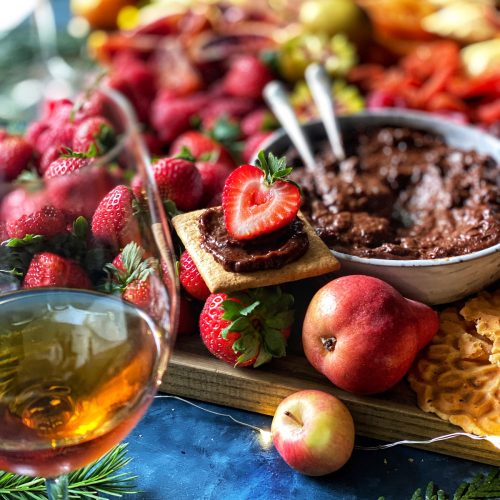
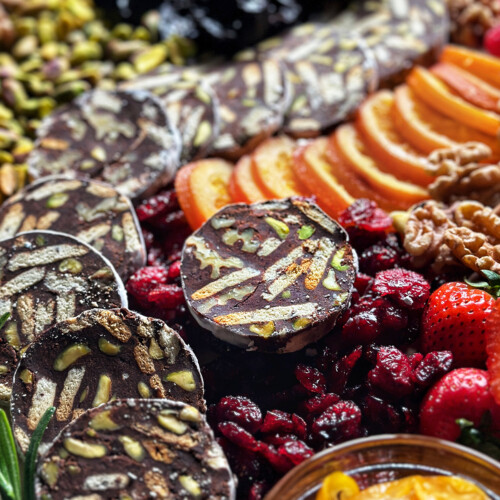
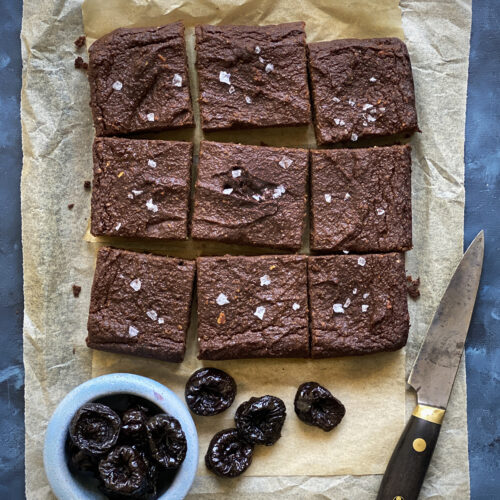

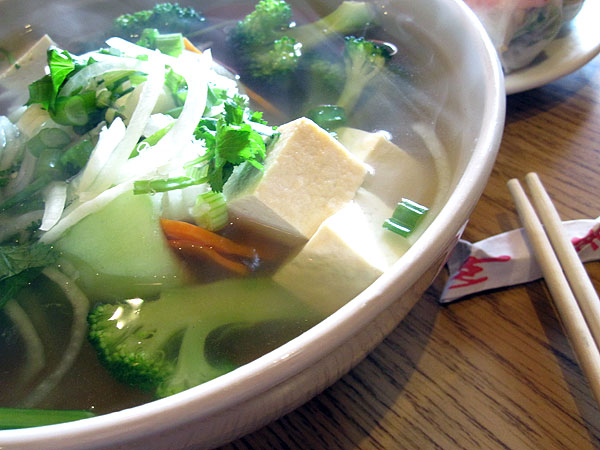
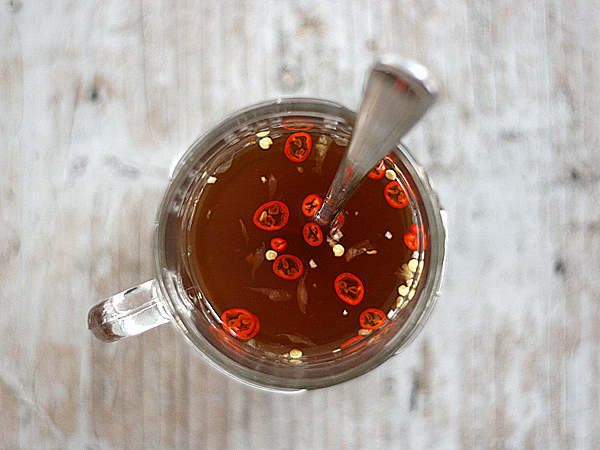
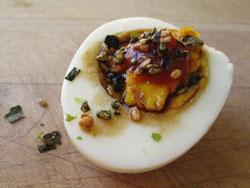
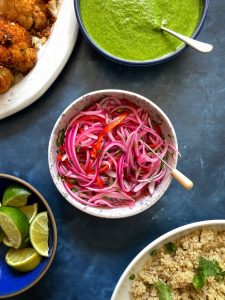
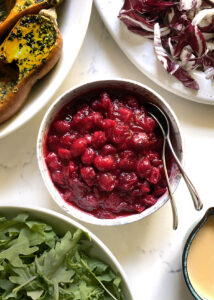
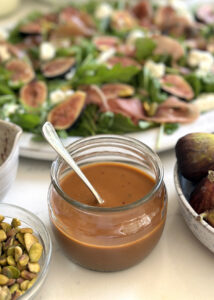
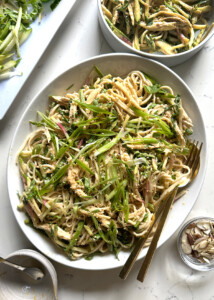
Leave a Reply